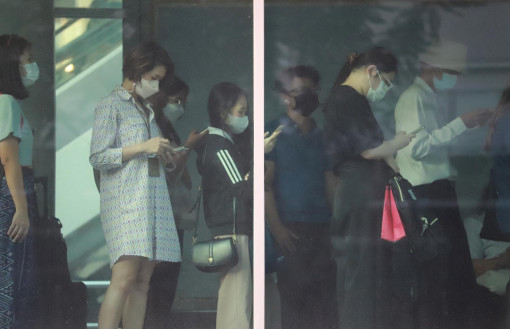Motorists urged to switch to public transportation

The government is urging members of the public, especially those who live in areas most heavily affected by PM2.5 pollution, to make the switch to public transportation, as authorities work out a way to resolve the problem.
Prime Minister Srettha Thavisin on Thursday asked the public to cooperate with the state’s effort to combat the country’s air pollution, which has been worsening over the past several days.
“We must work on improving the situation instead of just talking about it,” he said.
“We have to deal with the problem rather than wait for the pollution to subside on its own due to more favourable weather conditions.”
Mr Srettha made the comments after he attended a briefing on the nation’s PM2.5 dust pollution situation on Thursday at the Pollution Control Department (PCD).
All provincial governors have been instructed to prevent open waste burning in their respective provinces, while the relevant departments have been told to work with neighbouring countries to curb the practice, he said.
To help improve air quality around the capital in the long run, the government is considering rolling out incentives to get more motorists to switch to electric vehicles, as well as moving the busy Klong Toey port outside of the city.
For the time being, he said, commuters should stick to public transportation as much as possible, especially since fares along the Purple and Red lines have been capped at 20 baht.
The government is working to expand the scheme to include other lines in the capital, he said.
On Thursday, forty-four provinces reported unhealthy levels of the ultrafine PM2.5 pollutant, including Bangkok, according to an update by a combined task force responsible for monitoring air quality.
The task force is led by the Ministry of Higher Education, Science, Research and Innovation and the Geo-Informatics and Space Technology Development Agency (Gistda).
Ang Thong, Samut Songkhram, Saraburi, Sing Buri, and Samut Sakhon reported the highest average concentration of PM2.5 in the atmosphere yesterday, with 188.1, 148.7, 128.4, 127.8 and 126.1 microgrammes per cubic metre of air (μg/m3) respectively, according to the task force.
Meanwhile, forty-eight districts in the capital also reported unhealthy levels of PM2.5 dust on Thursday. As a result, IQAir, a Swiss company which provides global air quality data, ranked Bangkok as the city with the ninth-worst air pollution in the world on Thursday.
Bangkok governor Chadchart Sittipunt on Thursday admitted that City Hall lacks the authority to force public and private organisations in Bangkok to work from home in order to bring down emissions, saying all it could do was ask for cooperation.
The governor’s call was largely ignored by many public and private companies on Thursday, with traffic congestion during rush hour largely unchanged compared to other days.
Meanwhile, the Department of Health said its most recent survey found that the negative impact of air pollution is most evident among children between the ages of 5 and 14.
Up to 34% of people in this age bracket have suffered various forms of respiratory problems associated with the high levels of hazardous dust particles, said Dr Achara Nitiapinyasakul, director-general of the department.
In another development, Thanu Wongjinda, secretary-general of the Office of the Basic Education Commission (Obec), said schools in areas that have been declared as PM2.5 red zones have been allowed to decide for themselves whether or not they would suspend onsite classes when air pollution reaches unhealthy levels.
The schools are permitted to suspend classes for up to a week if necessary, according to Mr Thanu.

